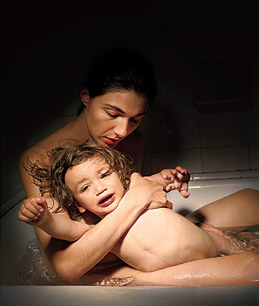
A sudden interruption turned what started as a routine press conference into a revealing anthropological dance. Health and Human Services (HHS) Secretary Kathleen Sebelius was addressing the media when NBC newscaster Chuck Todd loudly sneezed — a scary sound in a crowded room during the H1N1 flu pandemic one day last September.
"Bless you," Sebelius said. Then she did a double take and widened her eyes in reproach, an expression anyone who ever had a teacher or a mother recognizes — and fears. Todd had sneezed into his hand rather than using the approved into-the-elbow method for limiting flu transmission. "What is that about?" Sebelius asked sternly and then demonstrated the proper technique. "We'll have to get Elmo to give Chuck a special briefing," she added, a reference to a Sesame Street ad that shows kids how to sneeze hygienically.
The Cabinet Secretary was kidding — mostly — but Todd's red face and uneasy squirming looked awfully real. And while the newsman might have reacted the same way if he'd been called out by Mike Leavitt or Tommy Thompson or any of the other male HHS Secretaries who came before Sebelius, it's hard to picture. For humans, there has always been something about a health message coming from a woman that gives it special authority. The father may traditionally have been the head of the home — and the family doctor may traditionally have been male — but it was the mother who saw to it that the kids got vaccinated, Grandma made it to her heart specialist and Dad stayed on his blood-pressure meds. And while much about family life has changed over the decades, that part hasn't.
Women make the primary health care decisions in two-thirds of American households. They account for 80 cents out of every dollar spent in drugstores and are likelier than men to choose the family's health insurance. Even when both parents work, wives shoulder 75% of domestic responsibilities, including making the kids' doctor appointments and getting them there on time. "Women are the main brokers of health care in the United States," says Dr. William Norcross, a family physician and faculty member at the University of California, San Diego, School of Medicine. "This has long been the case and is probably true elsewhere in the world too."
It is, and the rule is not limited to mothers. In the 1990s, when Nepalese children faced an epidemic of vitamin-A deficiency, which can be deadly, and health experts needed someone to help distribute supplements, they recruited the nation's grandmothers, knowing they had both the time to get the pills out and the moral authority to make sure kids took them. By 2005, 48,000 grandmothers were distributing vitamin A to 3.5 million kids.
"Global development agencies are cuing into this kind of thing too," says anthropologist Sarah Blaffer Hrdy of the University of California at Davis. "When you give resources or money to women, more winds up in children's health. When you give it to men, it's likelier to wind up going for things like tobacco."
There are a lot of variables that explain the mom-as-health-czar phenomenon. As with so many things, it begins with evolution, but it doesn't stop there. Females of nearly all species expend far more time and energy producing young than males do and are thus far more motivated to protect that investment. "I could count on two hands the number of species in which males are primary caregivers," says Hrdy.